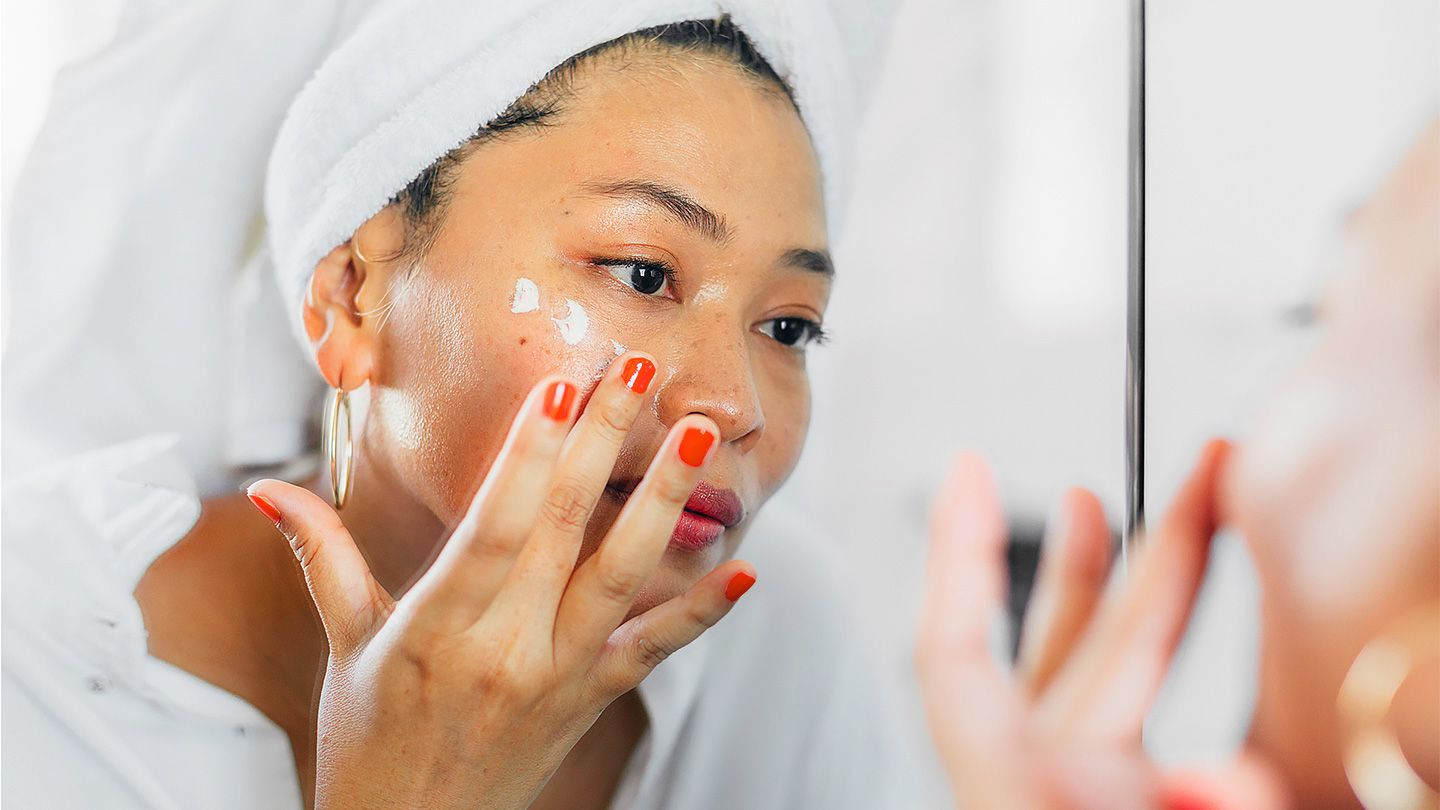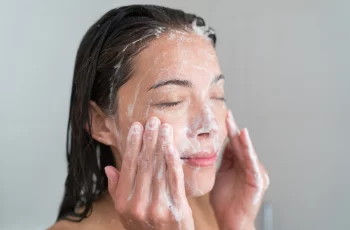
What are ceramides and how do they work in skincare?
In our search for all the anti-aging stuff, we turned our attention to the unsung hero of the beauty industry: ceramides. Ceramides are often overlooked, and you’ll find very little written about them. So, we’ve compiled answers to the most common questions about this skin-healing ingredient.
What are ceramides?
Ceramides are naturally occurring lipids, or fats, in the skin, primarily in the outer layer of the skin, where they help protect the skin from environmental influences like pollution. They also help maintain the health and function of the skin’s protective barrier. Ceramides are highly concentrated, making up 50% of the skin’s composition. This means that the way your skin looks and feels has more to do with them than you might think.
What do ceramides do?
Ceramides keep skin cells connected and form a protective layer over the skin, proving to be more effective than more common ingredients like retinol. Ceramides protect the skin from all the factors that can cause signs of aging and prevent moisture loss, keeping the skin looking youthful and healthy.
While the body naturally produces ceramides, you can also boost production with products made with synthetic ceramides. You can also add more fatty acid-rich foods to your diet, like avocados.
What are the benefits of ceramides?
Since ceramides occur naturally in your body, you may be wondering if it really makes sense to use products that contain them. In fact, incorporating them into your skin care routine can be very beneficial. Environmental aggressors such as UV radiation can have a huge impact on the skin’s natural ceramides, meaning they become depleted and the skin barrier becomes compromised. When this happens, you’ll notice your skin feeling tight, irritated and red, and wrinkles and fine lines become more noticeable.
Key Benefits of Ceramides
Ceramides Reduce Signs of Skin Ageing
Ceramides Reduce the Appearance of Fine Lines and Wrinkles
Ceramides Store Moisture and Prevent Dry Skin
Ceramides Help Dehydrated Skin
The benefits of ceramides are not limited to specific skin types. Now let’s explain what ceramides do for different skin types.
Which skin types benefit from ceramides?
All skin types can use products containing ceramides because they are already present in the body. You’ll find that using products with ceramides is beneficial for blemished skin and sensitive skin because they regenerate the skin and don’t damage or disrupt the skin’s daily functions.
If you suffer from eczema and psoriasis, you may have noticed that all topical products used to treat your condition often contain ceramides, as this powerful ingredient is super hydrating and moisturizing.
What is the difference between natural and synthetic ceramides?
Natural ceramides are found in the skin and can be obtained by eating foods rich in healthy fatty acids:
Sweet potatoes
Soybeans
Corn
Avocados
Wheat
Rice
Synthetic ceramides in skincare products are replicated in labs, etc., but can still effectively treat the skin. They can provide ceramides to the skin and provide a variety of benefits.
What should you look for when looking for products containing ceramides?
In most cases, if a product contains ceramides, it will be mentioned on the label and in the list of ingredients on the package. Look for ceramide, AP, EOP, NG, NP, or NS, as these are the names commonly used. It is worth looking out for phytosphingosine and sphingosine, as these ingredients are known as ceramide precursors, which means they can promote the production of natural ceramides in the skin.
Important: Always make sure you choose a product with the right packaging. I’m referring to products that are opaque and sealed in packaging, as most anti-aging ingredients are unstable and lose their effectiveness when exposed to too much air and UV rays.
Can I use ceramides with other ingredients?
Ceramides produce the best results when combined with other skin-repairing ingredients, especially those that contain fatty acids like glycerin. Antioxidants like niacinamide are also great skincare partners to use with ceramides. With this blend of ingredients, you’ll find that your skin tone, texture, and signs of aging are effectively treated.
The three main ingredients that will give you the best results are:
Retinol
Antioxidants
Peptides
Other skincare compounds like AHAs and BHAs also work well with ceramides, and you can expect impressive results because ceramide-infused products absorb into the skin faster by chemically exfoliating the skin and showing results. Some say there are similarities between hyaluronic acid and ceramides, which is understandable as they are very similar in terms of skin reactions and treatments. The main difference is that ceramides are less common and less well-known in the market.
Read our blog dedicated to chemical peels to learn more about how it works and perfect skin.
Is it better to use ceramide skincare products or supplements?
For some people, it doesn’t really matter how you incorporate ceramides into your daily routine, as long as you add them. Those with allergic skin and other underlying skin issues may find it easier to take supplements and treat the problem from the inside. For those with very dry and aging skin, a topical ceramide-rich cream or lotion is a better option.
How to use ceramide products in your skincare routine.
You’ll be happy to know that ceramides are found in a variety of products;
Cleansing products
Moisturizers
Serums
Face washes
Masks
Cleansers containing ceramides are best used twice a day for their moisturizing benefits. Apply moisturizer immediately after a shower while your skin is still slightly damp so that the product absorbs more moisture. Apply a product with SPF 30 or higher every day to protect your skin from UV rays. This should be the last step of your routine at night so that the product has time to absorb into the skin and work its wonders while you sleep.
Are There Any Side Effects?
Ceramides are generally safe to use on all skin types. However, as with all skincare products, it is recommended that you do a patch test to ensure that you do not experience any reaction or irritation.
To do this, follow these steps:
Apply a 10p-sized amount to your forearm.
Wait and watch to see if redness, itching or other irritation occurs.
If irritation occurs, wash the area immediately and stop using the product.
If you do not have an immediate reaction, leave it on for 24 hours. If no irritation occurs, the product is safe to use elsewhere.
When can I expect results?
You can see results almost immediately after using a ceramide moisturizer. Skin feels comfortable and soft, and looks happy and hydrated. In terms of anti-aging benefits, this may take longer due to the skin’s natural cell cycle and skin type. Generally, around six months is said to be a good time to see results in reduced fine lines and wrinkles.
As you know by now, ceramides occur naturally in the body, and you can’t blame yourself if you let your skin continue to produce ceramides.
If you want to further boost your skin’s ceramide production by incorporating products containing ceramides into your daily skin care routine, you will discover many benefits and have balanced, moisturized and youthful skin. You’ll be bummed that you didn’t learn about this powerful ingredient sooner!


